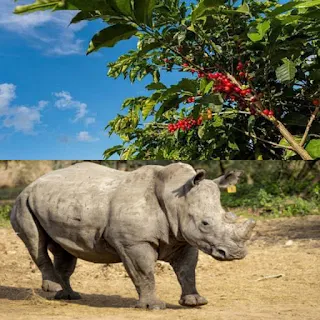Preliminary analysis of the genome of the Arabica coffee tree has indicated the important role of mutations and chromosomal exchanges in the evolution of this plant.
American, French and Italian geneticists have for the first time been able to decipher the genome of the coffee trees that produce Coffea arabica, the most popular type of coffee. Preliminary analysis of the genome of this coffee tree indicated the important role of mutations and chromosomal exchanges in the evolution of this plant. The researchers published the results of the study in the journal Nature Communications.
Analysis of the Arabica genome showed that this evolution of the coffee tree has recently witnessed a large number of chromosomal aberrations, including deletions, duplications and exchanges of chromosomes and their individual sections. "These anomalies are the main source of changes in tree structure, which is characterized by very low levels of genetic diversity."
This conclusion was reached by a group of European and American scientists led by Michele Morganti, a professor at the University of Udine, within the framework of a large-scale project dedicated to studying the genetic history of Arabica evolution.
In the past, geneticists sought to decipher the DNA of this type of coffee, but they were unable to fully achieve this due to the complex structure of the genome of this plant, which is a hybrid between the other two coffee trees, Robusta and Coffea eugenioides.
Researchers have solved this problem using two relatively new DNA sequencing technologies, On-Scale Nanopore Sequencing and Hi-C, which can apply large numbers of markers to DNA in chromosomes and use them to reconstruct the three-dimensional structure of the genome. Using these methods, scientists were able to read the entire Arabica genome, which consists of 1.32 billion nucleotides (“letters” of DNA) and 22 chromosomes.
Subsequent analysis of the structure of these DNA strands confirmed that Arabica is a hybrid of two other coffee species, accounting for approximately half of the Arabica coffee genome and another 27-28 thousand genes. In addition, scientists discovered that Arabica had a relatively low level of genetic diversity, and also discovered evidence of a large number of rearrangements in the structure of chromosomes, which were accompanied by deletions, duplications and exchange of different parts of them.
It is noteworthy that there are more than 120 species of coffee trees, half of which are used in the manufacture of various food products. However, only three of them, namely Arabica (Coffea arabica), Coffea liberica, and Robusta (Coffea canephora), are widely used in the food industry to produce coffee, as Arabica and Robusta represent 56% and 43% of global coffee.
The world's first rhino pregnancy via artificial insemination
The northern white rhino is considered extinct, with only two females surviving, but scientists believe a new artificial insemination treatment could save the species.
A team from the BioRescue Project, an international consortium of scientists and conservationists, believes in vitro fertilization (IVF) treatment could bring animals back to life.
Artificial insemination treatment is well-established for humans and domestic animals such as horses and cows, but this is the first time scientists have successfully used artificial insemination on rhinos.
The team performed the operation on southern white rhinos, which are related to the northern group.
BioRescue said it still has live cells from 30 northern white rhinos stored in liquid nitrogen, and intends to use them in a future artificial insemination treatment for its endangered relative.
BioRescue achieved the world's first rhino pregnancy by transferring a lab-created embryo using southern white rhinos, which still number in the thousands.
Scientists used an embryo from a southern white rhinoceros and implanted it into a surrogate mother at Ol Pejeta Conservancy in Kenya in September.
BioRescue announced that 70 days after the fertilized egg was implanted, the southern white rhino became pregnant with a male, but tragedy struck when a storm swept through the area, releasing bacteria called clostridia into the air, which can be fatal to the animals.
The rhino was killed in the storm, but scientists concluded that if the female made it through, her offspring had a 95% chance of survival.
It took the scientists 13 attempts to transfer rhino embryos before they achieved a successful pregnancy via artificial insemination.
The two remaining northern white rhinos were brought to the reserve to protect them from poaching.
Both animals enjoy strict protection, as armed guards are stationed around them day and night.
The female cannot become pregnant due to her age and health problems, so scientists decided to implant the fetus inside a surrogate uterus of a southern white rhino.
The team said the successful lamb gives them hope of achieving the same level of success with northern white rhinos.
A timetable for this process has not yet been set.



